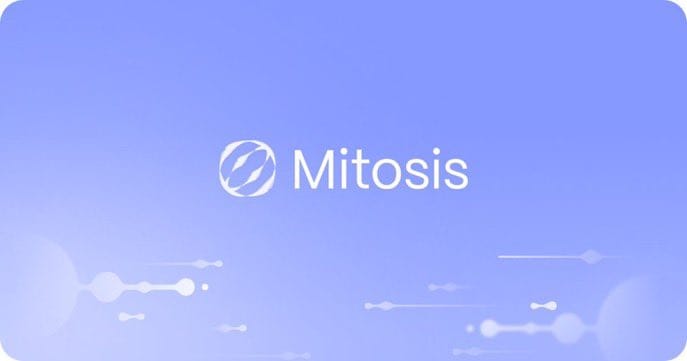Web3 and the Future of the Internet

Introduction
The internet is on the cusp of a profound transformation, and Web3 is driving this change. Often called the decentralized internet, Web3 harnesses blockchain technology, smart contracts, and cryptographic systems to create a digital ecosystem that prioritizes user sovereignty, transparency, and innovation. Unlike Web2, where centralized platforms like Google, Meta, and Amazon dominate, Web3 empowers individuals by giving them control over their data, identities, and digital assets. As of May 2025, Web3 is still in its early stages but is rapidly gaining traction, with over 1.2 million daily active blockchain wallets reported in Q1 2025, according to DappRadar. This article explores how Web3 is reshaping the internet and what its future holds for users, developers, and society.
In this article, we would explore:
1. Decentralized Ownership and Control
2. New Economic Models and Tokenization
3. Challenges and Barriers to Adoption
Decentralized Ownership and Control
At the heart of Web3 lies decentralization, a shift from centralized control to user empowerment. In Web2, tech giants act as gatekeepers, storing and monetizing user data through advertising or subscription models. Platforms decide what content is amplified or suppressed, often without transparency. Web3, built on blockchain networks like Ethereum, Solana, or Polkadot, flips this model by enabling users to own their data, digital identities, and assets through cryptographic wallets and decentralized applications (dApps).
Decentralization relies on trustless systems, where intermediaries like banks or social media companies are replaced by smart contracts—self-executing code on blockchains that automate agreements. For instance, users can store personal data on decentralized storage networks like IPFS (InterPlanetary File System) or Arweave instead of relying on centralized cloud services like Amazon Web Services. Decentralized identity protocols, such as Ceramic or DID (Decentralized Identifiers), allow users to selectively share data with dApps without surrendering full control. This ensures privacy and reduces reliance on third parties.
For Example: Consider Alice, a freelance artist. In Web2, she shares her work on platforms like Instagram, where algorithms dictate her visibility, and the platform owns her audience data. If Instagram bans her account or changes its policies, Alice risks losing her livelihood. In Web3, she uses a decentralized social platform like Lens Protocol, where her content and follower graph are stored on a blockchain. She owns her digital presence, and if she switches platforms, her audience and data follow her. This portability empowers creators and reduces platform dependency.
Decentralized ownership extends beyond content to digital assets. Non-fungible tokens (NFTs), for example, allow artists to tokenize their work, proving authenticity and ownership on blockchains. Collectors can buy NFTs, and creators can earn royalties on secondary sales, a feature baked into smart contracts. This model fosters a creator-centric internet where users, not corporations, hold the reins.
However, decentralization introduces complexities. Users must manage private keys—cryptographic passwords that secure their wallets. Losing a key can mean losing access to assets forever, a steep learning curve for non-technical users. Despite these challenges, decentralized ownership could redefine privacy, reduce censorship, and create a more equitable digital landscape.
New Economic Models and Tokenization
Web3 is revolutionizing how value is created, exchanged, and distributed through tokenization. Tokens—digital representations of assets, rights, or incentives on blockchains—come in two main forms: fungible (e.g., cryptocurrencies like ETH or stablecoins like USDC) and non-fungible (e.g., NFTs). These tokens enable new economic models that bypass traditional intermediaries, fostering a user-driven economy.
Decentralized finance (DeFi) is a prime example. Platforms like Uniswap or Aave allow users to trade assets, lend, or borrow without banks or brokers. Users can provide liquidity to trading pools and earn yields, often surpassing traditional savings accounts. In 2025, DeFi’s total value locked (TVL) exceeds $150 billion, per DeFiLlama, reflecting growing adoption. Tokenization also enables fractional ownership, making high-value assets like real estate or rare art accessible to everyday investors.
Decentralized Autonomous Organizations (DAOs) are another innovation. DAOs use governance tokens to let communities collectively manage projects, from funding public goods to curating digital art. For instance, ConstitutionDAO raised over $40 million in 2021 to bid on a copy of the U.S. Constitution, showcasing how token-based systems can coordinate large-scale efforts without centralized leadership.
For Example: Take Bob, a gamer. In Web2, he spends money on in-game skins for games like Fortnite, but the developer owns those assets. If the game shuts down, Bob loses everything. In a Web3 game like Axie Infinity or The Sandbox, Bob earns NFTs for his in-game items, which he can trade on marketplaces like OpenSea for real-world value. Similarly, a musician could tokenize their album as NFTs, allowing fans to buy shares and earn royalties. Platforms like Sound.xyz have enabled artists to raise millions through such models.
These systems align incentives between creators and users. For instance, play-to-earn games reward players with tokens, while DAOs distribute profits to token holders. However, volatility in crypto markets—evident in the 2022 crash that wiped out $2 trillion in market cap—poses risks. Regulatory scrutiny is also intensifying, with governments debating how to classify tokens (securities or commodities) and enforce tax compliance. Despite these hurdles, Web3’s economic models signal a shift toward a more inclusive, creator-driven economy that challenges traditional financial systems.
Challenges and Barriers to Adoption
Web3’s potential is immense, but significant obstacles stand in its way. Technical complexity is a major barrier. Interacting with dApps, managing wallets, and understanding gas fees (transaction costs on blockchains) require technical literacy that alienates mainstream users. For example, Ethereum’s high gas fees, sometimes exceeding $50 per transaction, deter casual users, though layer-2 solutions like Optimism and Arbitrum are reducing costs.
User experience (UX) is another pain point. Web2 platforms like Google offer seamless interfaces, while Web3’s reliance on wallets and browser extensions (e.g., MetaMask) feels clunky. Simplifying UX—through wallet abstractions or social logins—is critical for mass adoption. Projects like Coinbase’s Base chain are experimenting with user-friendly interfaces, but the ecosystem has a long way to go.
Regulatory uncertainty looms large. Governments worldwide are grappling with how to regulate cryptocurrencies, NFTs, and DAOs. Some countries, like China, have banned crypto trading, while others, like the EU, are drafting frameworks like MiCA (Markets in Crypto-Assets). In the U.S., the SEC’s classification of certain tokens as securities has sparked lawsuits against platforms like Coinbase. Clear regulations could foster trust, but overregulation risks stifling innovation.
Environmental concerns also persist. Proof-of-work blockchains like Bitcoin consume vast energy—Bitcoin’s annual energy use rivals that of small countries. While Ethereum’s 2022 shift to proof-of-stake reduced its energy consumption by 99.9%, per the Ethereum Foundation, public perception of crypto’s environmental impact lingers. Greener blockchains are essential for mainstream acceptance.
For Example: Sarah, a small business owner, wants to accept crypto payments via a Web3 platform like Stripe’s crypto integration. She finds wallet setup confusing, gas fees unpredictable, and her country’s crypto tax laws ambiguous. Without clearer guidelines and better tools, she hesitates to adopt Web3. Similarly, scams like rug pulls—where DeFi developers abandon projects after raising funds—erode trust. In 2024, over $3.7 billion was lost to crypto scams, per Chainalysis.
Social challenges are equally pressing. While Web3 aims for decentralization, new forms of centralization emerge. Wealthy “whales” often dominate token supplies, and influential DAOs can mimic corporate hierarchies. Ensuring equitable access and preventing monopolistic behaviors are critical for Web3’s ethos to hold.
Conclusion
Web3 is not a panacea but a bold reimagining of the internet. It promises a world where users control their digital destinies, creators are fairly rewarded, and innovation thrives without gatekeepers. Yet, its success depends on overcoming technical, regulatory, and social hurdles. As of May 2025, projects like Filecoin (decentralized storage), Arweave (permanent data), and Polkadot (interoperable blockchains) are pushing boundaries, but adoption remains niche.
The future may see a hybrid internet, blending Web2’s usability with Web3’s principles. For instance, platforms like Twitter (now X) could integrate Web3 features, letting users own their data while maintaining familiar interfaces. With over 500 million monthly active users on X, such integrations could accelerate Web3’s reach.
Web3’s impact is already visible: DeFi is disrupting finance, NFTs are reshaping art, and DAOs are redefining governance. Whether it fully replaces Web2 or augments it, Web3 is laying the foundation for a more open, equitable digital world. The journey is just beginning, and its outcome will shape the internet for generations.


Comments ()